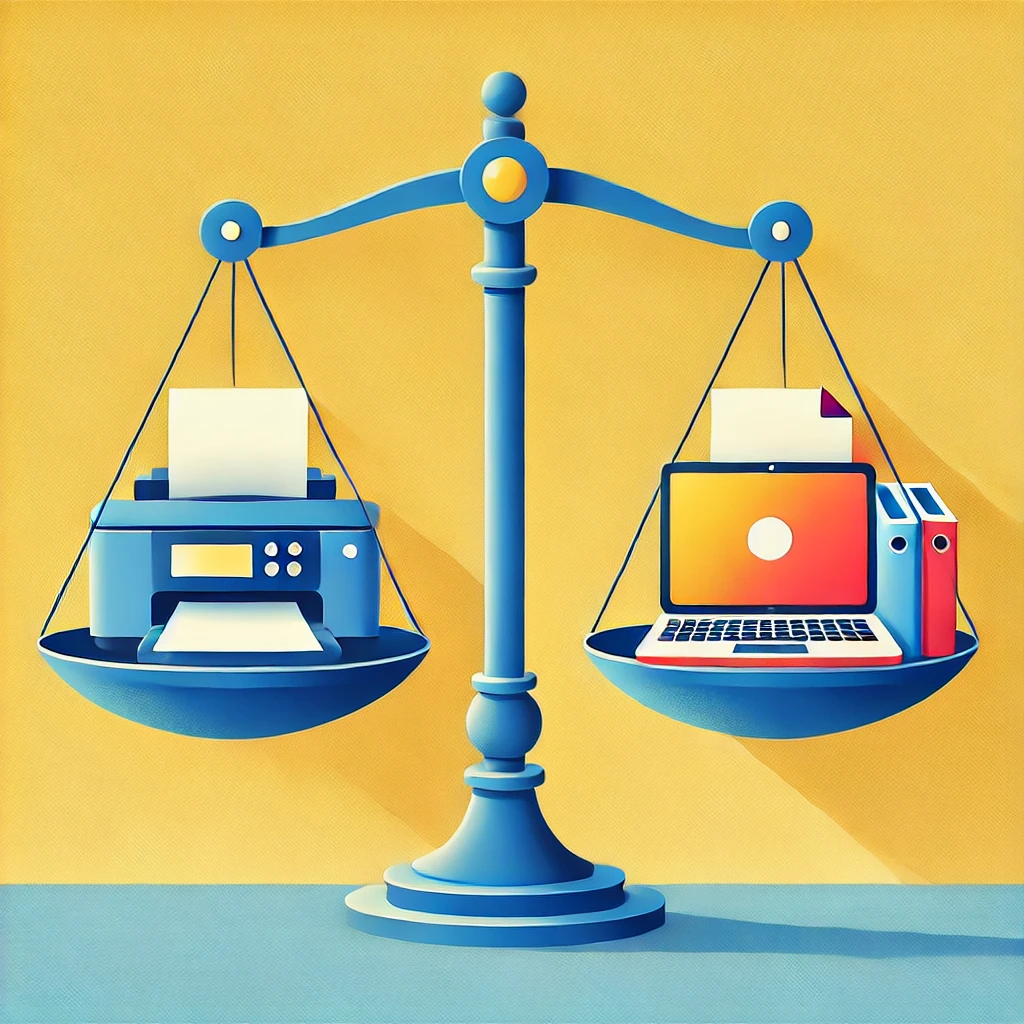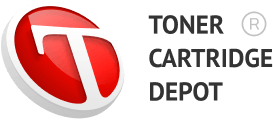
In an era where smartphones fit in our pockets and entire libraries can be stored on a single device, the concept of a “paperless world” seems within reach. Yet, despite rapid technological advancements, the debate between digital and print mediums continues to spark discussion in boardrooms, classrooms, and homes alike. This tension between the tactile familiarity of paper and the sleek efficiency of digital platforms presents both opportunities and challenges for individuals and organizations.
As we navigate this evolving landscape, one question looms large: How do we strike the right balance between digital and print in a world that increasingly favors pixels over paper? This article delves into the nuances of this digital transformation, exploring the benefits, drawbacks, and strategic considerations of both mediums. By examining key factors such as environmental impact, productivity, health, security, and cost, we aim to provide a comprehensive guide for finding equilibrium in your personal and professional life.
The Rise of the Paperless Office
The concept of the “paperless office” has gained significant traction in recent years, driven by advancements in technology and the growing availability of “paperless office solutions.” These solutions include tools and platforms that facilitate the digitization of documents, allowing businesses to reduce their reliance on paper.
Document Digitization: One of the most significant benefits of document digitization is the ability to store and manage vast amounts of information electronically. Digital files are easily searchable, can be accessed remotely, and are often more secure than physical documents. According to a study by AIIM (Association for Intelligent Information Management), companies that have implemented digital document management systems report a 50% reduction in the time spent searching for information and a 30% increase in productivity.
However, the transition to a paperless office is not without challenges. Many organizations still rely on printed materials for certain tasks, such as signing contracts, reading lengthy reports, or conducting in-depth analysis. The key is to find a balance that leverages the strengths of both digital and print mediums.
Environmental Considerations
One of the most compelling arguments for moving towards a paperless office is the “environmental impact of paper production.” Paper manufacturing is resource-intensive, requiring large amounts of water, energy, and raw materials. Additionally, deforestation for paper production contributes to habitat loss and increased carbon emissions.
Energy Consumption of Digital Devices: On the other hand, digital devices also have an environmental footprint. The energy consumption of servers, data centers, and personal devices contributes to greenhouse gas emissions. A study by the Lawrence Berkeley National Laboratory found that data centers in the United States alone consume approximately 73 billion kWh annually, accounting for 2% of the country’s total energy consumption.
While digital solutions may reduce the need for paper, they are not entirely free from environmental impact. The challenge is to weigh the environmental costs of both mediums and make informed decisions that minimize harm. For instance, businesses can implement “sustainable printing practices” such as using recycled paper, reducing print volumes, and optimizing printer settings to reduce waste.
Efficiency and Productivity
Efficiency and productivity are critical factors in the digital vs. print debate. “Print management software” plays a vital role in optimizing resources, allowing organizations to monitor and control printing activities, reduce waste, and lower costs. This software can track usage, enforce print policies, and provide detailed reports, helping businesses make data-driven decisions about their print strategies.
Hybrid Workplace Strategies: As the workplace evolves, “hybrid workplace strategies” that blend digital and print are becoming more common. For example, employees might use digital tools for quick communication and collaboration while relying on printed materials for tasks that require deep focus or long-term retention. A survey by PwC found that 72% of office workers prefer to print documents when they need to concentrate, highlighting the ongoing relevance of print in a digital world.
By combining digital and print tools, organizations can create a more flexible and efficient work environment. The key is to use each medium where it excels—digital for speed and convenience, and print for focus and comprehension.
Storage and Accessibility
When it comes to storing and accessing information, the choice between “cloud storage vs. physical archives” is crucial. Cloud storage offers several advantages, including easy access from anywhere with an internet connection, automatic backups, and the ability to share files with multiple users in real time. According to Gartner, by 2025, 80% of businesses will have completely moved away from on-premises data centers to cloud storage solutions.
Physical Archives: However, physical archives still have their place, particularly for documents that require long-term preservation or legal protection. Printed documents do not rely on technology to be accessible, making them less vulnerable to cyberattacks or data breaches. Additionally, some industries, such as finance and law, are required to keep physical copies of certain records for compliance purposes.
The choice between cloud storage and physical archives depends on the specific needs of the organization. For many businesses, a hybrid approach that uses both digital and print storage methods can provide the best of both worlds, ensuring that information is both secure and easily accessible.
Health and Wellbeing
In the debate between digital and print, “health and wellbeing” are often overlooked but essential considerations. With the rise of remote work and increased screen time, “digital eye strain” has become a common issue. The American Optometric Association defines digital eye strain as a group of eye and vision-related problems that result from prolonged computer use. Symptoms include headaches, blurred vision, dry eyes, and neck and shoulder pain.
Cognitive Benefits of Print: On the flip side, reading printed materials has been shown to offer cognitive benefits. A study published in the journal PLOS ONE found that participants who read a story on paper had better comprehension and recall than those who read the same story on a screen. The tactile experience of handling a book or document and the ability to easily annotate or highlight text can enhance understanding and retention.
Balancing digital and print can help mitigate the negative effects of screen time while maximizing the cognitive benefits of reading. For example, employees might use digital tools for quick tasks and switch to print for more in-depth reading or analysis.
Security Concerns
Security is a critical consideration when choosing between digital and print mediums. Both forms have their strengths and vulnerabilities.
Data Security in Digital Environments: In the digital realm, data security is a top priority. With the increasing threat of cyberattacks, organizations must implement robust security measures to protect sensitive information. This includes encryption, firewalls, and multi-factor authentication. Despite these precautions, data breaches are still a significant risk. According to a report by IBM, the average cost of a data breach in 2023 was $4.45 million.
Print Security: On the other hand, print environments also require security measures. Printed documents can be easily misplaced, stolen, or accessed by unauthorized individuals. Implementing secure print solutions, such as requiring authentication before printing or using watermarked paper, can help protect sensitive information.
The key to effective security is understanding the risks associated with both digital and print mediums and implementing appropriate safeguards for each. For highly sensitive information, a combination of digital encryption and secure print practices may be the best approach.
Cost Analysis
When evaluating the cost implications of digital vs. print, it’s important to consider both the short-term and long-term expenses.
Digital Infrastructure Costs: Investing in digital infrastructure, such as cloud storage, document management systems, and cybersecurity measures, can be costly upfront. However, these investments often lead to long-term savings by reducing the need for physical storage, paper, and printing supplies. A report by Deloitte found that businesses that fully embrace digital transformation can achieve cost savings of up to 40% over five years.
Sustainable Printing Practices: On the other hand, “sustainable printing practices” can help reduce the ongoing costs associated with print. This includes using energy-efficient printers, implementing print management software, and encouraging employees to print only when necessary. By optimizing print activities, businesses can lower their environmental impact and reduce operational costs.
Ultimately, the choice between digital and print depends on the specific needs and goals of the organization. In many cases, a balanced approach that leverages both mediums can provide the most cost-effective solution.
Finding the Balance
The journey towards an optimal mix of digital and print solutions is not about choosing one over the other, but rather about thoughtful integration. By leveraging the strengths of both mediums, organizations and individuals can create a more efficient, sustainable, and productive environment.
Consider these strategies for effective integration:
- Task-specific approach: Assess each task or project individually, choosing the medium that best suits its requirements. For instance, use digital tools for rapid communication and collaboration, while opting for print materials when deep focus or long-term retention is crucial.
- Embrace hybrid workflows: Develop processes that seamlessly blend digital and print elements. This might involve using digital platforms for document storage and sharing, while relying on printed materials for critical meetings or in-depth analysis.
- Accommodate diverse preferences: Recognize that individuals have different working styles and preferences. Offer flexibility in choosing between digital and print options to create a more inclusive and productive work environment.
- Regular assessment and adjustment: Continuously evaluate your digital and print strategies, adjusting them based on evolving technologies, organizational needs, and employee feedback.
Strategies for Integration: One effective strategy is to assess the specific needs of each task or project and choose the appropriate medium accordingly. For example, digital tools might be best for quick communication and collaboration, while print materials could be more effective for tasks that require deep focus or long-term retention.
Additionally, businesses can adopt hybrid strategies that blend digital and print in a way that complements their workflows. This might include using digital platforms for document storage and sharing while relying on print for critical meetings, presentations, or in-depth analysis.
Choosing the Right Medium: It’s also essential to consider the preferences and needs of employees. Some individuals may prefer the convenience and speed of digital tools, while others may find that they work better with printed materials. By offering a range of options, organizations can create a more flexible and inclusive work environment.
As we navigate the complex landscape of digital transformation, finding the right balance between digital and print mediums has become increasingly crucial. Both offer unique advantages: digital platforms provide unparalleled speed and accessibility, while print materials offer tangible benefits for focus and retention.
The key to success lies not in choosing one over the other, but in strategically leveraging the strengths of both. By thoughtfully integrating digital and print solutions, organizations and individuals can optimize their workflows, enhance productivity, and contribute to a more sustainable future.
Remember, there is no one-size-fits-all solution. The optimal balance will vary depending on your specific needs, industry, and organizational culture. By regularly assessing and adjusting your approach, you can stay ahead of the curve and create a more efficient, sustainable, and productive environment.
As you reflect on your own digital and print usage, consider taking these steps to achieve a more balanced approach:
- Conduct an audit: Assess your current usage of digital and print mediums. Identify areas where you might be over relying on one or the other.
- Start small: Implement gradual changes, such as digitizing rarely used documents or encouraging mindful printing practices.
- Seek feedback: Engage with colleagues or team members to understand their preferences and challenges regarding digital and print mediums.
- Invest in education: Provide training on effective use of both digital tools and print resources to ensure everyone can make informed choices.
- Set goals and measure progress: Establish specific objectives for optimizing your digital and print usage, and regularly track your progress towards these goals.
By taking these steps and making thoughtful decisions about when to use digital or print mediums, you can create a more efficient, sustainable, and productive environment. Remember, the goal is not to eliminate one in favor of the other, but to find the perfect balance that works for you and your organization.
